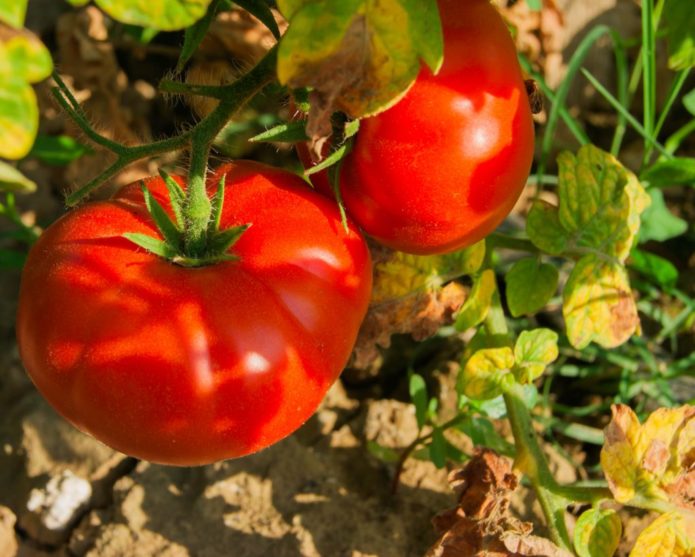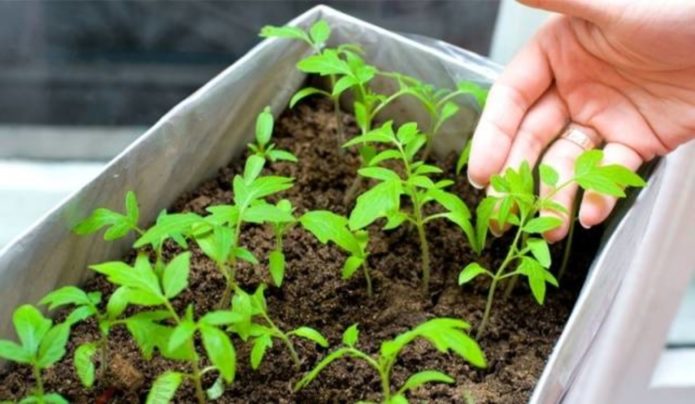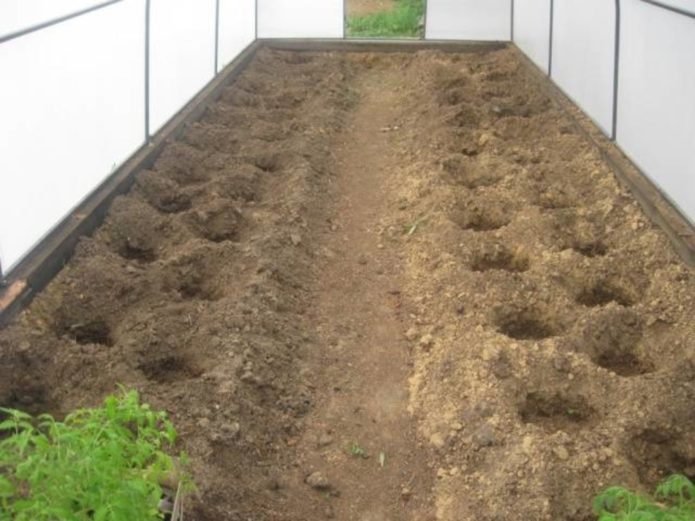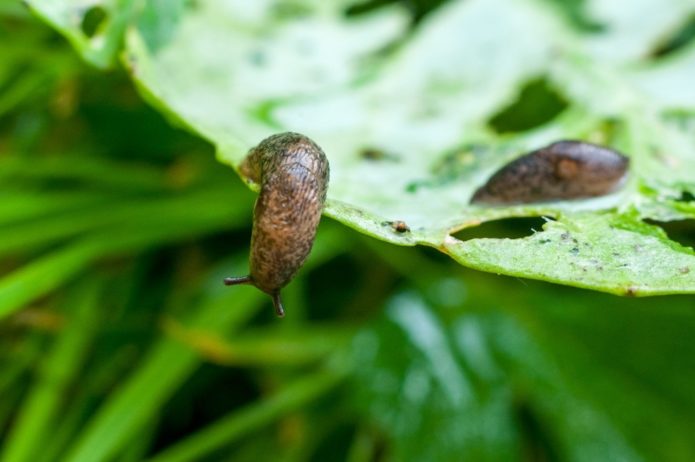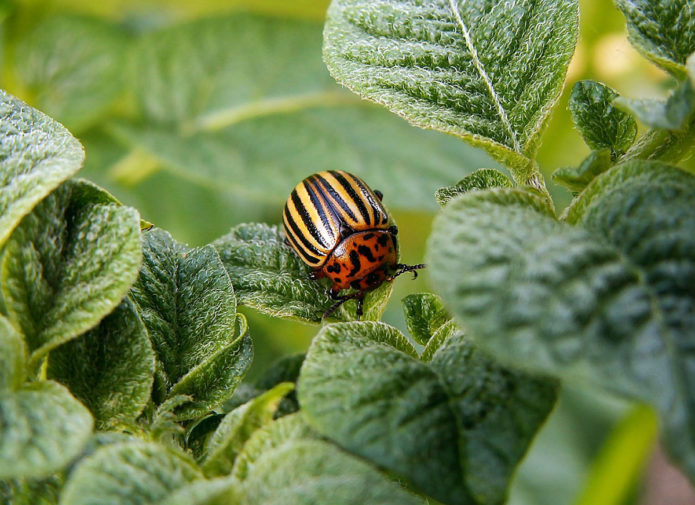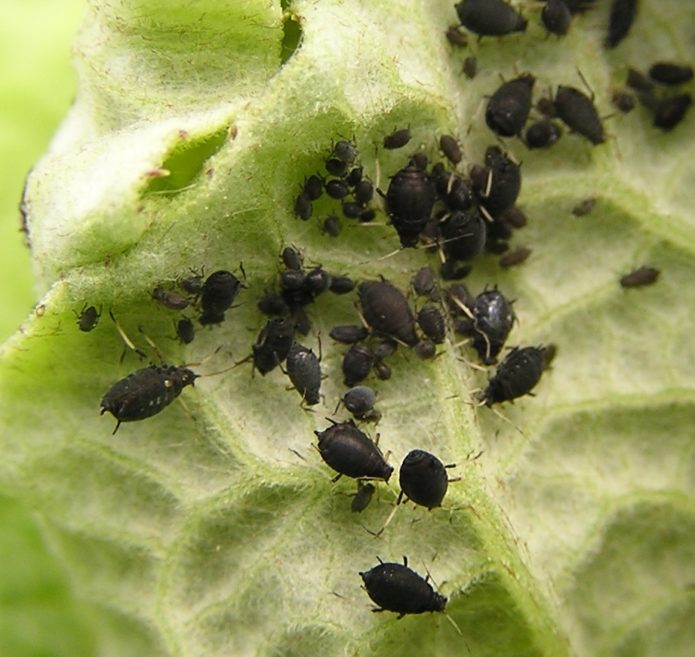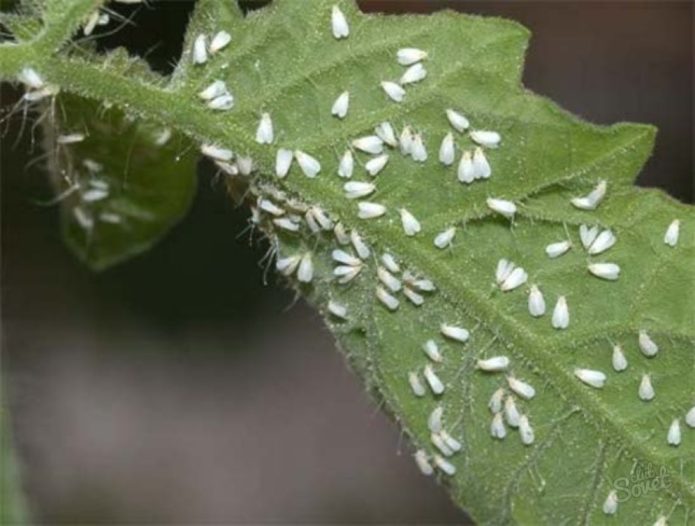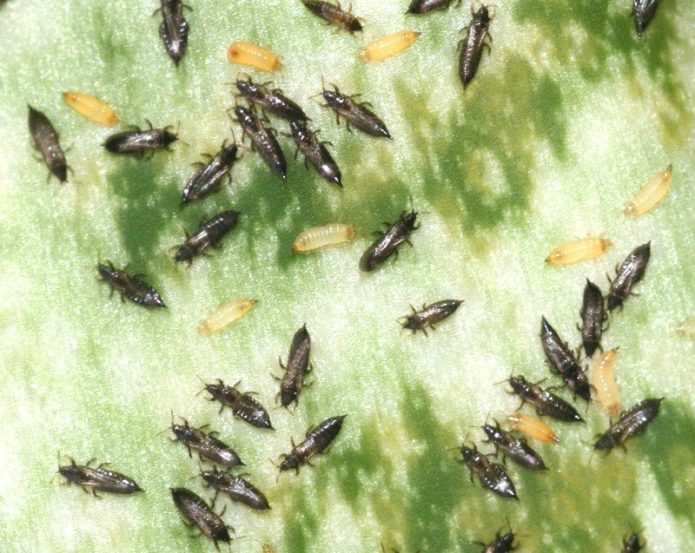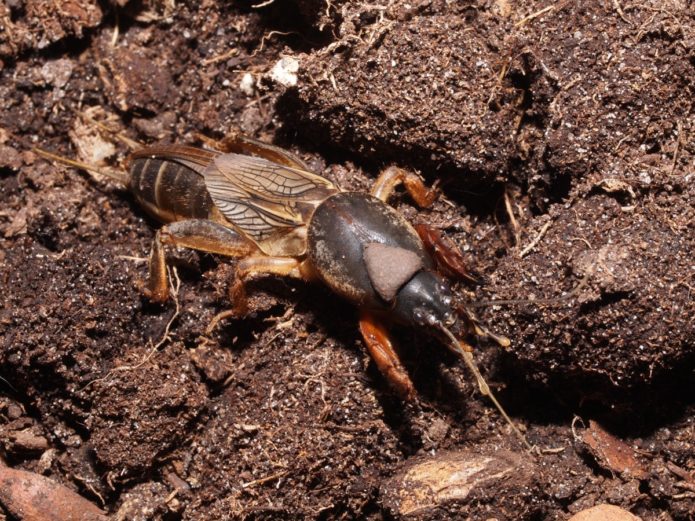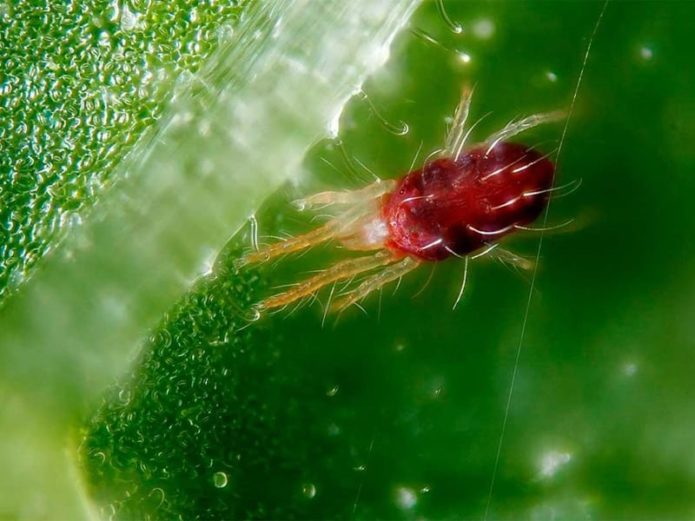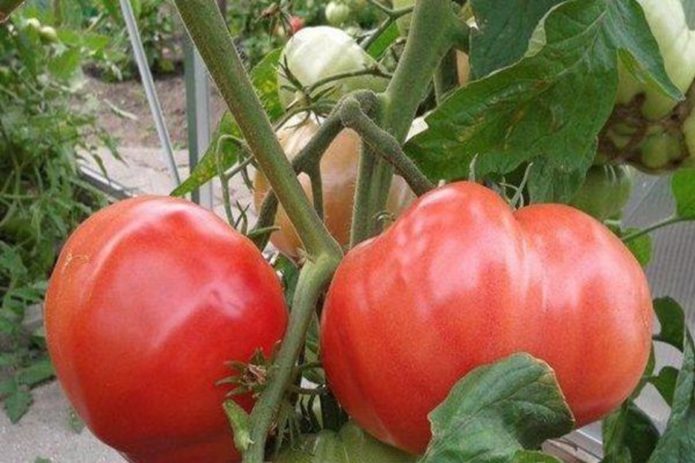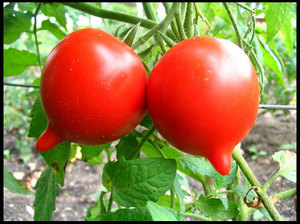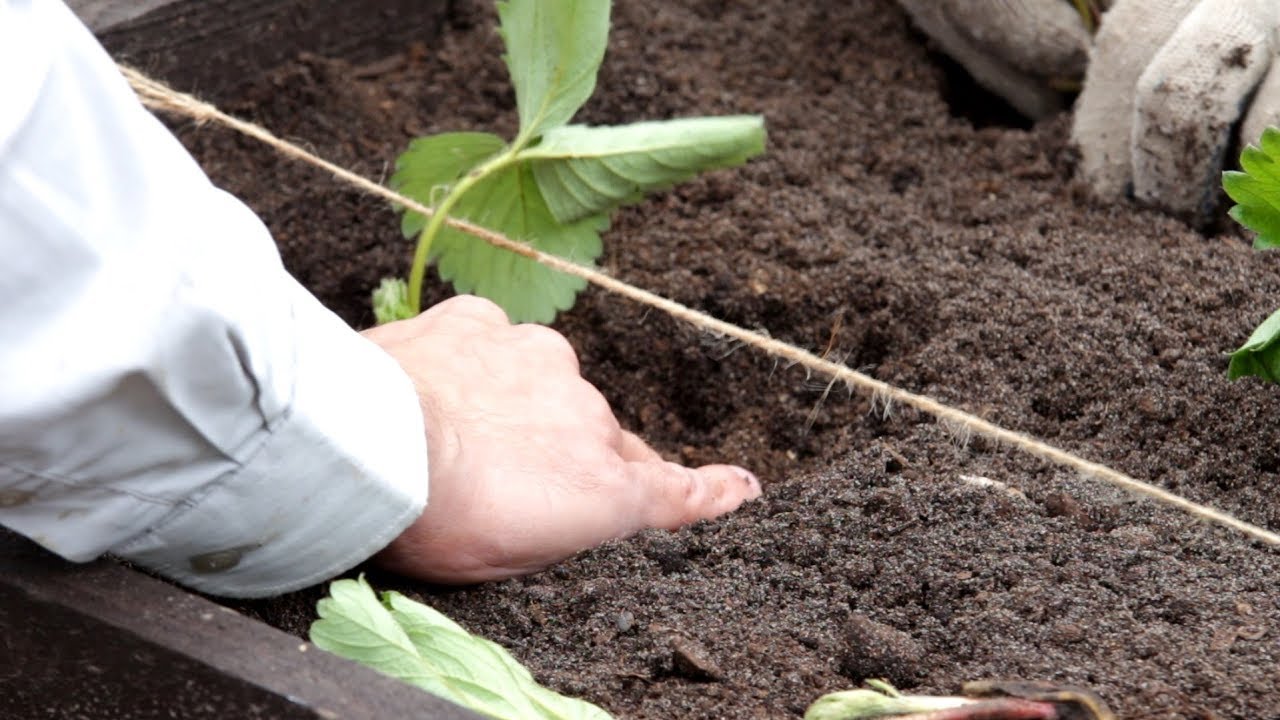The Bear Paw tomato is a high-yielding variety bred by amateur breeders. It is great for growing in temperate to warm climates. Gardeners who want to grow it on their site are advised to first familiarize themselves with the characteristics and description of the variety, its advantages and disadvantages, planting and care features.
Content
Description of the variety: what is special about it?
Tomatoes "Bear's Paw" are a medium early variety, which got its unusual name due to the non-standard shape of the leaves. Bushes reach a height of 2 m. Large semi-circular tomatoes ripen in small clusters of 3-4 pieces. Near the stalk, they have a pronounced ribbing, and when ripe, their color changes from green to saturated red. The fruit has a glossy skin and juicy fleshy flesh.
Advantages and disadvantages
Advantages of the Bear Paw variety:
- high productivity;
- disease resistance;
- large fruits;
- long shelf life;
- drought resistance.
The main disadvantage of tomatoes is that tall bushes require strong support and formation, since this variety belongs to indeterminate, that is, the bush can grow in height indefinitely if you do not pinch the growing point. The disadvantage of tomatoes for some gardeners is the pronounced sourness in the taste of the fruit.
Landing features
Tomatoes "Bear's paw" are grown in seedlings. It is recommended to sow seeds in early spring. Before planting, it is necessary to prepare a soil mixture consisting of soil and humus, taken in equal parts, and bake it in the oven for 10 minutes. It is advisable to add a little river sand and peat to heavy soil. Then the soil mixture should be removed for 2 weeks.
The day before planting, the seeds must be soaked in warm water to increase their germination.
Sowing seeds for seedlings
Step-by-step instructions for sowing tomato seeds for seedlings:
- Fill shallow containers with a height of 15 cm with the prepared soil mixture.
- Make grooves on the ground surface 1 cm deep.
- Place the tomato seeds in the soil, 2 cm apart.
- Sprinkle them with earth on top and water well.
- Then the containers should be removed for several days in a dark place, covering the plantings with glass or polyethylene.
It is recommended to ensure that the room temperature does not drop below +25 ° C. After 3-4 true leaves are formed, the seedlings must be dived into separate containers and fed with fertilizers containing nitrogen. Grown plants should be tempered by taking them out to the balcony or terrace, first for 30 minutes, and later for a day.
As soon as shoots appear, the containers must be transferred to the windowsill and provided with additional 12-hour lighting. Watering the plantings is necessary as the earth dries up, with warm water. After 1.5 - 2 months seedlings can be transplanted into open ground. By this time, 5-6 true leaves are formed in seedlings. Before transplanting into open ground, the plants will need to be fed with nitrogen fertilizers.
Outdoor transplant
In regions with severe winters, it is recommended to grow tomatoes in a greenhouse, the soil in which must be prepared in the fall by digging it up and removing weeds. It is advisable to replace the top layer of the earth in it in order to avoid the spread of parasites in the spring, and immediately before planting add humus, compost, sand and peat to the soil, taken in equal parts. Tomatoes should be planted in the prepared holes in a checkerboard pattern at a distance of 60 cm.
It is not recommended to plant tomatoes in places where eggplants and peppers used to grow. But they can be placed next to onions, garlic, cabbage, cucumbers and members of the legume family.
It is possible to move seedlings into open ground only after warm weather has established on the street and the ground has warmed up well. They need to be planted at a distance of 60 cm from each other in small holes. If you plan to organize several rows, then 70 cm must be left between them. The seedlings should be moved together with the earthen lump and lightly sprinkled with soil on top. After transplanting, the seedlings should be watered abundantly with warm water.
Further care
To obtain a rich harvest, it will be necessary to provide the plantings with proper care, which includes the regular implementation of the following manipulations:
- watering;
- fertilization;
- bush formation.
You should also carry out pinching, which involves the removal of excess shoots from the plant. They need to be removed by hand or with sharp scissors, pre-processed in potassium permanganate.
Watering
Watering should be moderate. Waterlogging of the soil should not be allowed, since the roots of the plant will begin to rot. At the same time, the soil should not dry out completely either. The optimal frequency of watering is 1-2 times a week.
After transplanting seedlings into open ground, the plants should be watered only after a week. Water for irrigation should be warm and settled. Pour 3 liters of liquid under one bush. During flowering, plants need abundant watering. During this period, it is necessary to bring at least 5 liters under one bush, but not more often than 1 time per week.
As soon as the plants begin to bear fruit, the watering intensity should be reduced to avoid cracking the tomatoes.
Top dressing
The first feeding is carried out a week after transplanting seedlings into open ground. In the future, it is necessary to feed the plants 1 time in 2 weeks.
It is recommended to apply fertilizers based on phosphorus or potassium. The first substance has a beneficial effect on the formation of a healthy root system, and the second one helps to improve the taste of tomatoes. In 10 liters of water, you will need to dissolve 30 superphosphate or potassium sulfate and add the resulting liquid during the next watering. Ash can also be periodically embedded in the soil.
During the flowering period, in order to stimulate the formation of ovaries, tomatoes will need to be sprayed with boric acid at the rate of 1 g of substance per 1 liter of water.
Bush formation
The plant will need to be tied up at the top. It is recommended to use a wooden or metal strip as a support. You can tie tomatoes of this variety to the supporting structure by pulling a wire between the bushes, to which you will need to attach the plants.
Diseases and pests
This tomato variety is resistant to the main diseases of the nightshade, which include verticilliasis, tobacco mosaic, late blight and fusarium wilting. But for preventive purposes, it is recommended to shed the earth before planting with a hot manganese solution. After watering, it is also advisable to open the greenhouse vents to prevent the appearance of gray or white rot. It is recommended to mulch the soil with peat to avoid the formation of root rot.
Tomatoes can be attacked by the following parasites:
- Naked slugs.
- Colorado beetles.
- Aphid.
- Whiteflies.
- Thrips.
- Medvedki.
- Spider mites.
To destroy slugs and beetle larvae, you will need to spray the plants with an aqueous solution of ammonia. Treatment with soapy water will help get rid of aphids.
To kill flying insects, you should use an insecticide spray.Treatment with these preparations is recommended before the start of fruiting. After fruit setting, preference should be given to spraying with chamomile broth or onion peel-based solution. It is necessary to process not only the affected bush, but also the neighboring plantings.
Harvesting
The first crop can be harvested approximately 115 days after planting. The fruits ripen gradually during the season. It is advisable to take the last harvest in the fall, before the frost begins. If you follow the recommendations for leaving one bush, you can collect from 10 to 30 kg of fruits weighing up to 800 g each.
Fleshy large tomatoes can be stored for a long time and can be transported over long distances. Plucked green fruits ripen quickly at home. They should be stored in a dark and dry room at a temperature not exceeding + 23 ° C. You can eat ripe fruits fresh or prepare salads, juice, soup, various hot dishes, sauces, pastas or mashed potatoes from them.
The variety "Bear Paw" is undemanding in care and is resistant to various diseases. If all the recommendations are followed, the gardener will be able to get a rich harvest without much effort.
